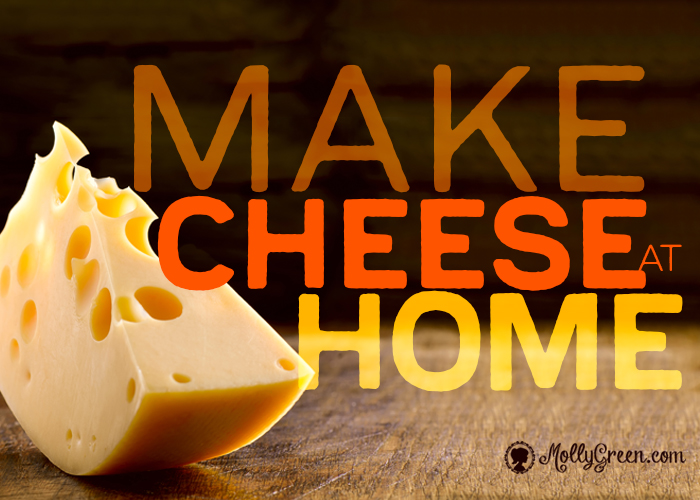You might think there is no way to make hard cheese like Gouda or Cheddar (when I say “hard” cheese, I mean the texture, not the difficulty). But making cheese at home is easier than most people realize.
I’m here to tell you that you can make homemade hard cheese. I know this because I have taught hundreds of beginners to make beautiful wheels of Gouda. I believe that learning a skill like cheese making is an important step in being more self-reliant, wholesome, healthy, and empowered. Homemade cheese-making also saves you money.
If you’re not convinced yet, here are some of the most common misconceptions about making cheese at home:
People assume they need their own dairy animals, or that it requires raw milk to make cheese.
That is not true. Although I raise my own dairy goats and use their raw milk for making cheese, most of my students buy pasteurized cow milk at the store and make wonderful cheese with it. Of course, if you can purchase milk from a local farmer, it’s even better!
People worry that they need to buy expensive equipment to make cheese.
This could not be further from the truth. In fact, many people already have the utensils they need in their kitchen: stainless steel pots, stirring utensils, a knife, a colander … Instead of buying expensive molds and cheese presses, you can easily make your own.
My short YouTube video shows how to do this.
People think making cheese is a complicated, scientific process.
Nah! People have made cheese for thousands of years—first sloshing around in containers made from animals’ intestines, then with soured milk pressed between cloth under heavy rocks. With good instructions, making cheese is as easy as reading and following a recipe.
People are afraid that they will poison their family and friends with their cheese.
Salmonella, E-coli, food poisoning … Many folks are really scared about food safety—as they should be. It’s smart to be safe when it comes to food. But just as people are intimidated by canning food, if you follow good instructions and practice sound sanitation, making and preserving your own food is safe.
People believe they need a cheese cave to age their cheese.
Most of us don’t live in France with our own cave. That’s fine! You can easily replicate ideal cheese aging conditions with a wine cooler set to the highest temperature with a bowl of water in it. I have aged thousands of pounds of cheese in the crawl space underneath my house.
Now that I’ve addressed some myths about cheese making, let’s talk about the fun stuff.
Benefits of Making Cheese at Home
After making hundreds of wheels of cheese, I still marvel at the alchemy of milk transforming into curds. I let out a squeal of delight every single time this happens. Making cheese is a magical act of transforming a perishable liquid into a delicious, aged gourmet product.
Cheese making is a fun, rewarding, and empowering skill—and a way to take charge of your food supply. Do you want to feed your family cheese made with milk that has been pumped full of antibiotics, growth hormones, and pesticides? We don’t. This is why we should support organic farmers by either buying their milk in the store or directly from their farm. Organic milk makes healthy, tasty cheese!
Have you looked at the price tag of some organic cheeses out there? They are high, and they should be because a lot of resources, knowledge, and skill go into this cheese. Making your own cheese saves you lots of money! You can make a wheel of Gouda for a fraction of the cost you would buy it at the store.
I believe that making my own cheese gives me a better-tasting product. It’s fresher, creamier, and better than store-bought. Also, I can make some really unique cheese like Gouda flavored with sage, nettles, or caraway seeds—combinations you can’t find at the store.
Lastly, one benefit of making your own cheese at home is to impress your family and friends! People will think you’re the Big Cheese when you whip out a chunk of cheese that you made all by yourself. Now there’s a reason to learn how to make cheese!
Corina Sahlin homesteads on five acres in the upper Skagit Valley, Washington, where you can find her with her hands either in the dirt, in a pot full of whey stirring curds, or mixing cabbage in a crock of sauerkraut. She teaches homesteading skills like artisan cheese making and fermentation, both at her homestead and also in online classes. To enroll in a class or for more information and inspiration, visit www.marblemounthomestead.com. Look for Corina’s upcoming Bite-Sized Guide on making Gouda Cheese!





